How move to flexible farrowing systems worked for two pig farmers
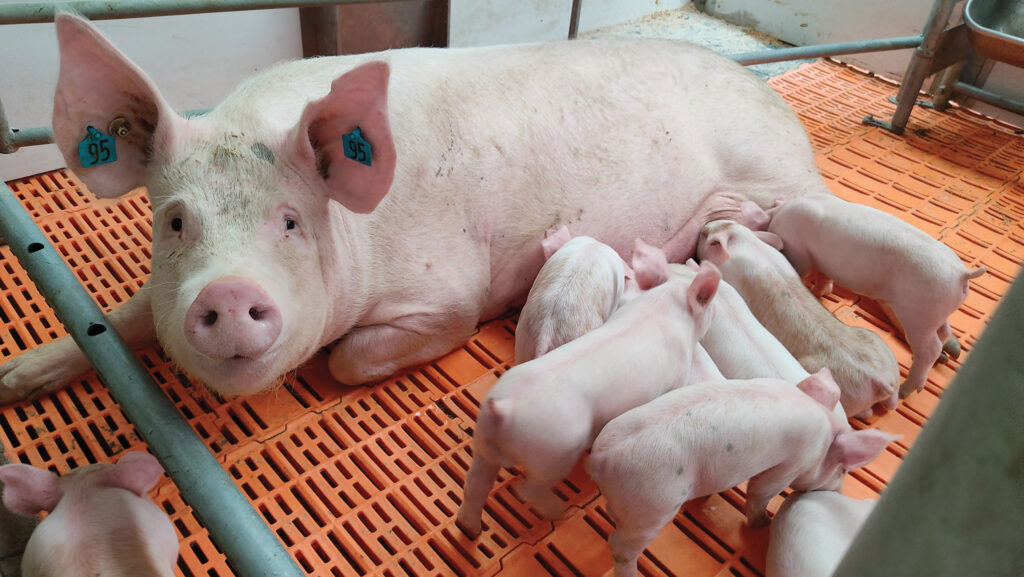 © Matthew Wilkin
© Matthew Wilkin Transitioning from conventional farrowing crates to flexible farrowing pens will bring many challenges, along with significant opportunities to further improve pig welfare, based on producers’ experience to date.
Pig producers and their staff who have already installed flexible farrowing systems – which offer extra space for the sow – say they prefer them to conventional crates.
See also: What is the future for flexible farrowing systems?
Many pig producers are hesitating to invest, however, as capital costs are 30-50% higher for every sow place than conventional crates.
Costs are estimated at £3,500-£5,000 a sow place to refurbish existing buildings, and £5,000-£8,000 a sow place for a new building.
As businesses also need guidance (along with financial support) on future requirements for flexible farrowing from the supply chain and government, Farmers Weekly spoke to two producers for their practical insights.
Case study: Sam Ward, Lincolnshire
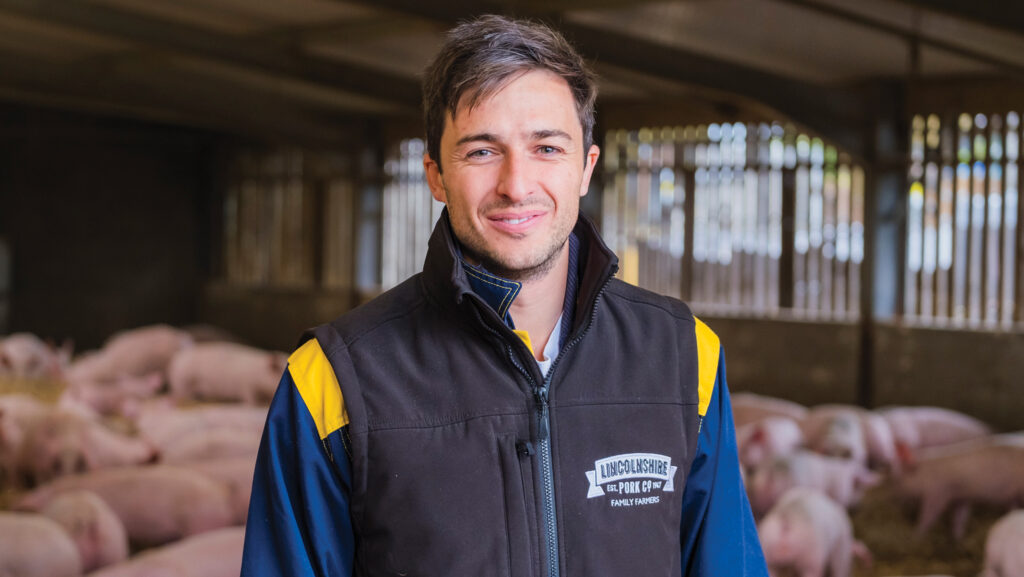
Sam Ward © AHDB
Farm facts
- Pig enterprise integrated with arable, renewables and farm shop
- Two 740-sow breeding units, plus finishing units
- 15.5 average piglets born alive
- 6.75kg average piglet weaning weights at an average 24.5 days old
Sows have been more relaxed and easier to handle, with increased appetites and milk production, according to Sam Ward, who farms with his mother, Meryl, in Lincolnshire.
“They spread out more when lying down, giving better access to teats, so piglets generally grow quicker, which helps reduce risk of overlays,” says Sam.
He says they invested in a flexible farrowing system during a complete rebuild of the farrowing and nursery accommodation on one of their two 740-sow breeding units.
For the past three years, both units have had flexible farrowing for all sow places.
It provided the opportunity to further improve welfare and reduce the environmental impact of the unit, helping improve business resilience, sustainability and meet consumer demands.
Meryl’s long-term focus on pig welfare meant they had previously trialled a small number of completely free farrowing systems.
One key learning from this was that removing sows with poor mothering ability could help reduce piglet mortality, which gave them confidence they could manage another free, or flexible, farrowing system successfully.
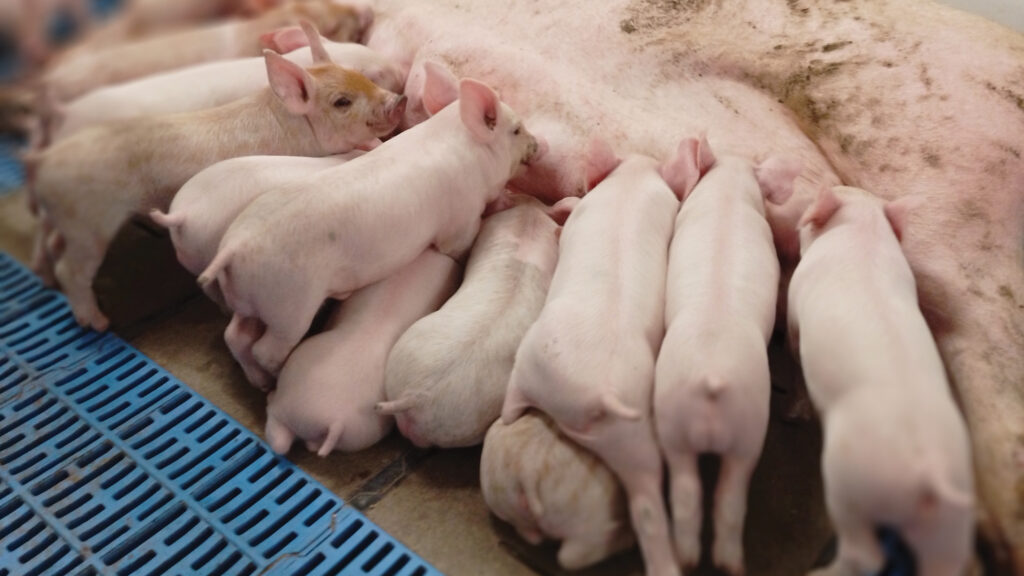
© Lincolnshire Pork Co
Market research
Sam and Meryl were looking for a simple, easy-to-use system and researched different designs in the UK, Germany, the Netherlands and Denmark.
They eventually chose a flexible farrowing system designed by a farming couple working with Dutch manufacturer Nijenkamp.
“Our greatest priority was the flexibility to adjust the pen, enabling us to provide more space for the sow, while also helping protect piglets from sow overlays and keeping stockpeople safe,” says Sam.
The Nijenkamp pen has a single removable pin and bar to lift up one of the side bars to give the sow extra space. The new pens are each 6.24sq m – this is 40% bigger than their previous conventional crates.
Reducing piglet mortality
“The pen is open for the first 24 hours, then sows are closed in for farrowing. Pens generally stay closed for three to five days, until the last sow’s litter is processed.
“All sows are let out together on the same afternoon, at the last feeding time, so that it’s quiet afterwards, with no people about.”
Initial records showed that most overlays happened during the day after sows were let out.
Sam says they changed their original routine of letting sows out on different days, though they still have the flexibility to open an individual pen earlier if a sow seems a bit jumpy.
Overlays are currently averaging 10.1% on one unit, and 11% on the other.
Sows are also closed in for brief periods while staff handle piglets for vaccinations, taking a moving board with them if they go into the pen.
Overall, the amount of labour needed is the same as for the previous conventional system.
Case study: Matthew Wilkin, Yorkshire
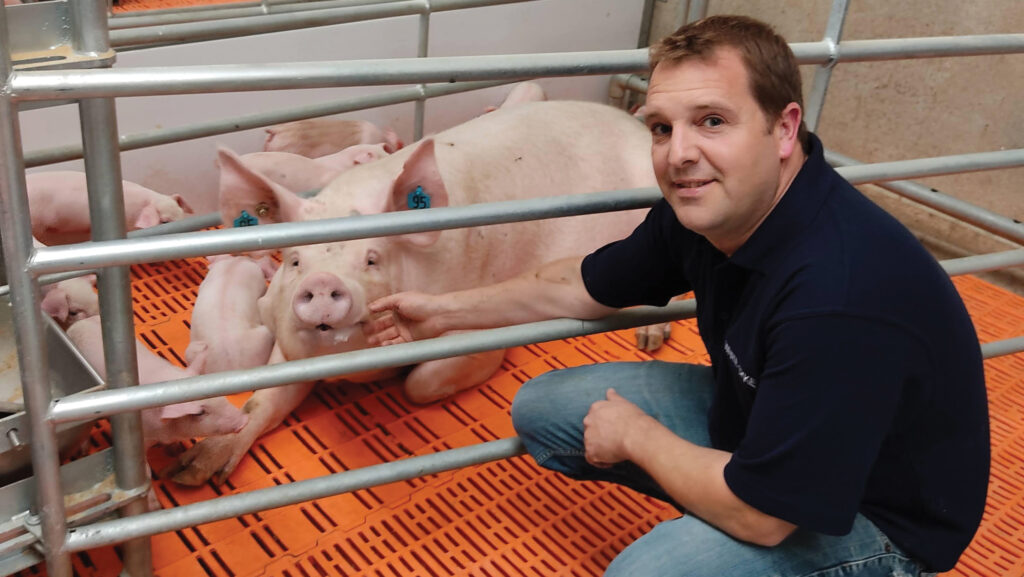
© Matthew Wilkin
Farm facts
- 2,100-sow breeding herd
- Selling weaned pigs at 28 days old
- Additional enterprise supplying FarrOpen systems and other pig equipment
- 15.9 average piglets born alive
- 7.3kg average piglet weaning weights at an average 28 days old
Stronger piglets with more “get up and go” seven days post-farrowing are the result of using home-designed flexible farrowing pens in Matthew Wilkin’s breeding herd of 2,100 sows.
Farming with his father, John, Matthew says they decided to try flexible farrowing pens 12 years ago to replace tired farrowing accommodation.
“We wanted to future-proof our investments, putting in systems that would continue to meet consumer demands and comply with any new legislation,” he explains.
Safe and easy system
Having looked at various options at Eurotier, Germany, they invested in the British-designed 360deg Freedom Farrower for 30 pens.
Several years later came a further 60 pens with a different flexible farrowing design from Big Dutchman.
While the Wilkins were managing these systems effectively (for both sows and piglets), Matthew says they felt they could design their own flexible farrowing pen with some improvements.
These focused on making it even safer and easier for staff to use.
The first pens of their own design (named the FarrOpen) were installed five years ago, with 380 now in use.
Key features included positioning the feed trough at the front of the pen, next to the central walkway, as they found sows preferred to face that way, and low pen sides making it easy to access piglets without entering the pen.
A bar is moved horizontally to either close or open out the pen at different positions, depending on the sow, with a simple fixing. There are two sizes: 6sq m or 6.5sq m.
All sows are closed in on the morning they are induced to farrow and are released once all piglets in the room have been vaccinated against porcine reproductive and respiratory syndrome, up to seven days post-farrowing.
“Piglets are stronger and seem more used to lying on their heat pad and avoiding mum,” says Matthew, adding that pre-weaning mortality averages 11%.
Gilts all farrow unconfined and remain that way. The risk of overlays is lower than with sows because they are smaller and more responsive.
“Gilts can get into a comfortable position and, when they are free to turn around, get a better understanding of what is happening during farrowing.”
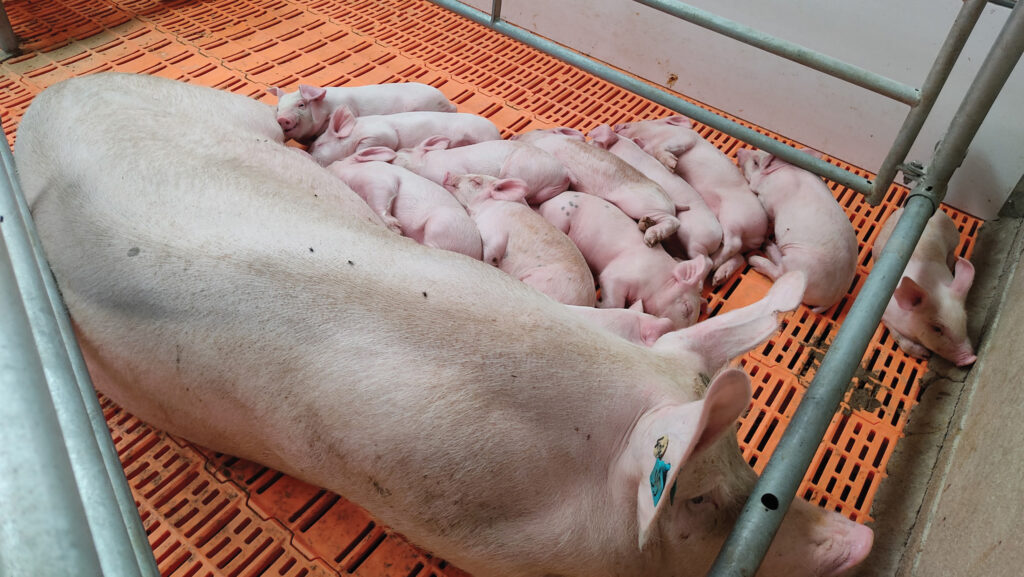
© Matthew Wilkin
Work routines
Automatic ad-lib feeders were used to help simplify work routines and ensure optimum feed intake. This has also contributed to much more relaxed sows, without increased activity at feeding times.
Feed and water are delivered separately to maintain hygiene, and overall, sow feed intakes are higher.
Minor changes have been made to the flexible farrowing system to improve usability. These include an adjustable bottom rail, which has helped reduce piglet mortality, and simpler fastenings for ease of use.
The same amount of labour is needed as for their old conventional system.
